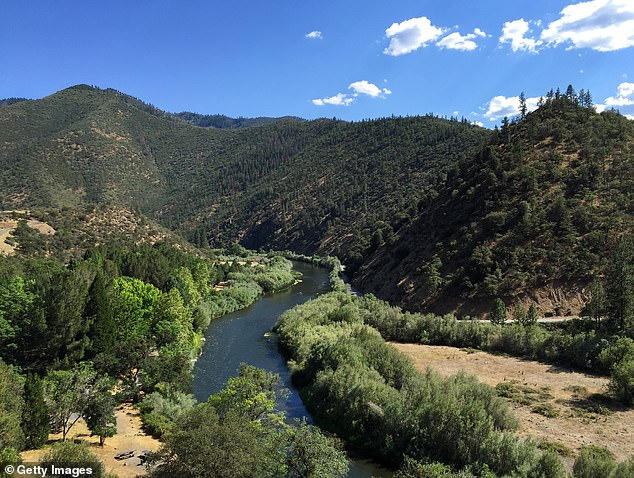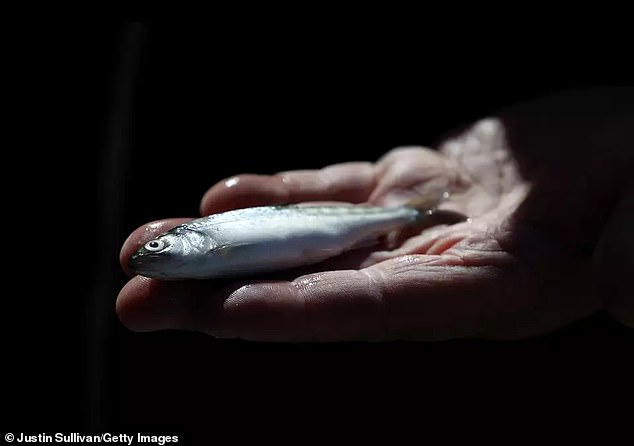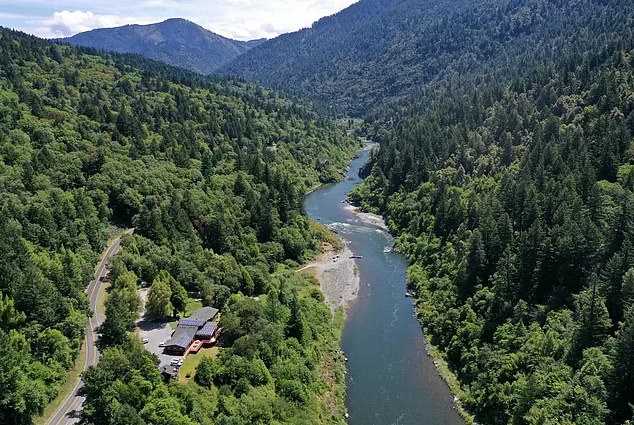Mysterious disease kills 800,000 salmon babies just released into California river to help improve population in stream
- Nearly 800,000 baby salmon died after being released into the Klamath River
- The babies died of a mysterious disease that caused their gills and fins to bleed
- In November, the California Department of Fish and Wildlife removed the Iron Gate Dam to improve the species’ population
Nearly 800,000 baby salmon died of a mysterious disease after they were just released into a California river to help improve their population in the stream.
The Chinook salmon died early last week after California Department of Fish and Wildlife officials released them into the Klamath River, which is above the Iron Gate Dam tunnel near the California-Oregon border.
The dam on the 250-mile-long river was removed in November in an effort to allow salmon, Pacific lamprey and steelhead access to their habitat and to reduce the presence of poor water quality.
The babies, which had just been hatched at the new $35 million Fall Creek Fish Hatchery, died of gas bubble disease, which likely left the fish with lesions and ruptured their gills and fins.
“The problems associated with the Iron Gate Dam tunnel are temporary and are yet another sad reminder of how dams on the Klamath River have harmed salmon fisheries for generations,” the agency said.
Nearly 800,000 baby salmon died last week after being released into California’s Klamath River. Chinook Salmon is known as the largest salmon species and is ‘sustainably managed and responsibly harvested under US regulations’

The Klamath River (photo) lies above the Iron Gate Dam tunnel near the California-Oregon border. A dam along the 250-mile-long river was removed in November in an effort to boost the salmon population
The babies, known as salmon, were struck by the disease as they made their way through the Iron Gate Dam tunnel, which the California Department of Fish and Wildlife called “old infrastructure.”
The bizarre disease is caused by physical or environmental damage caused by an “increased partial pressure of nitrogen” in source or groundwater, according to the National Institute of Health.
“CDFW will plan all future salmon releases below Iron Gate Dam until this infrastructure is removed.”
“Poor habitat conditions caused by the dams and other conditions like these are reasons why CDFW is conducting the introduction of hatchery fish at different life stages.”
The deceased fish – which only recently hatched – were the first of the species to pass through the river and were also the first to be released from their new hatchery by the agency, SF port reported.
The agency said there is “no evidence” that the fish deaths were related to water quality in the Klamath River turbidity — the measure of sediment in the water — or dissolved oxygen levels.
The agency added that at the time the young salmon were released, both values were at ‘appropriate levels’.
Although the disease has killed a large portion of the baby salmon, approximately 3.27 million Chinook salmon still live in the stream.
Chinook salmon is known as the largest salmon species and is “sustainably managed and responsibly harvested under U.S. regulations.” NOAA Fisheries reported.
The type of salmon is also anadromous, meaning they hatch in freshwater before being moved to saltwater streams to grow and feed.

The type of salmon is also anadromous, meaning they hatch in freshwater before being moved to saltwater streams to grow and feed.

State officials said there is “no indication” the fish deaths were related to water quality in the Klamath River turbidity — the measure of sediment in the water — or dissolved oxygen levels.
They are most commonly found in Monterey Bay, California, and can also be found in the Chukchi Sea area of Alaska, according to NOAA Fisheries.
In the fall, the agency announced it was “pursuing urgent action” to save the remaining Chinook salmon in the Central Valley after their numbers “fell sharply toward extinction.”
Cathy Marcinkevage, assistant regional administrator for the NOAA Fisheries West Coast region, previously said, “We are running out of options.”
“We want this species to thrive in the wild, but right now we’re afraid we’re losing them.”
In their latest press release, the agency said their annual goal for Chinook salmon production is to “raise and release 3.25 million fish.”
“The additional stock of Chinook salmon remaining at the hatchery in the fall will exceed annual production goals and will help offset losses incurred during the initial release of fry,” the agency said.
